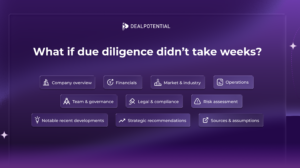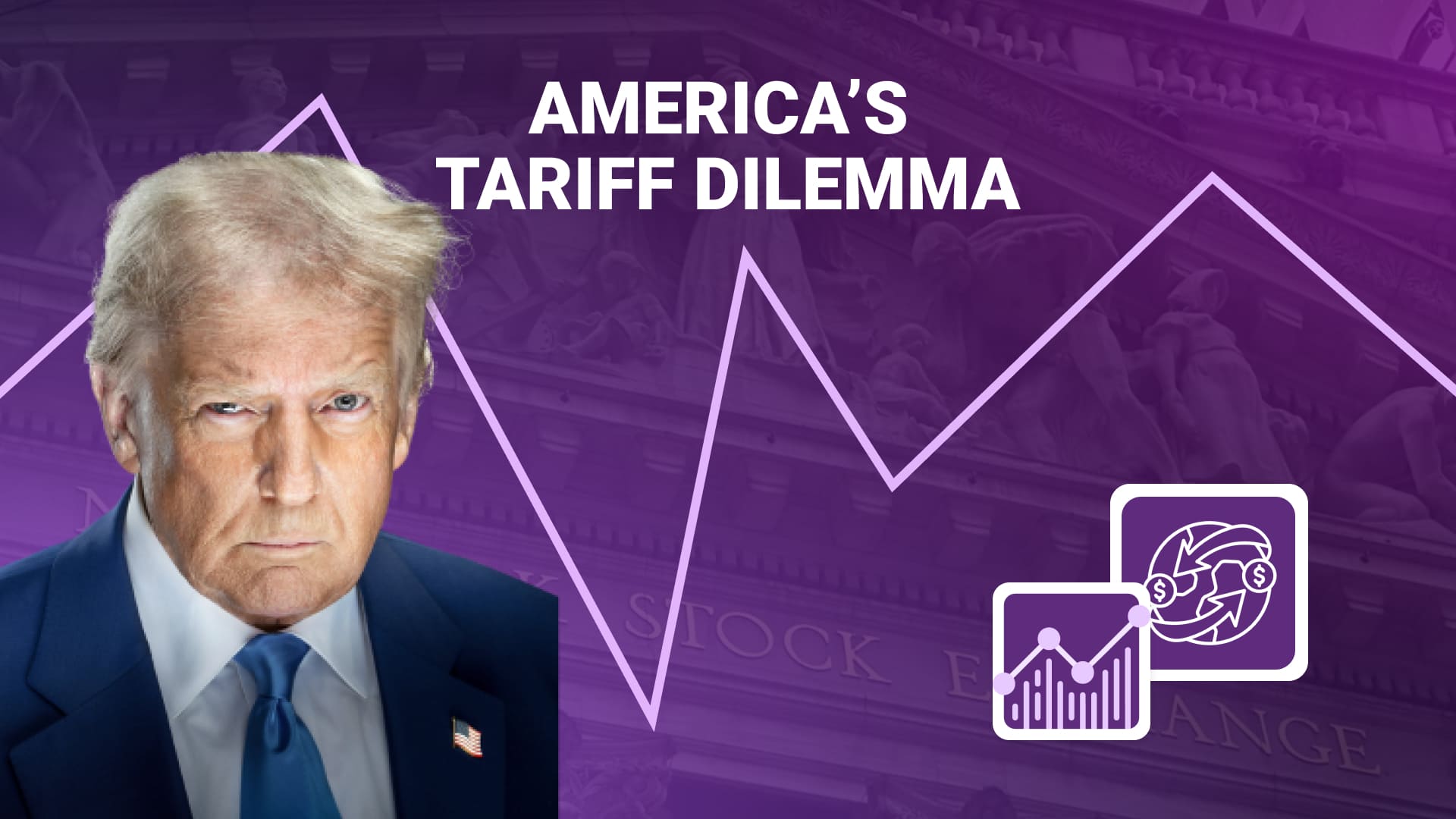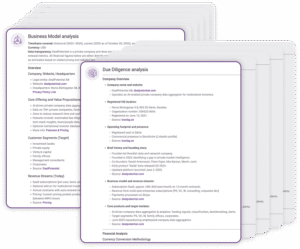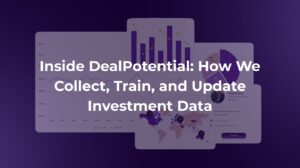
What if due diligence didn’t take weeks?
A leading US investment bank, focused on early- and growth-stage transactions, finally found a single tool to unify its fragmented deal intelligence.

In 2025, U.S. trade policy and tariffs are once again in the spotlight. Now, these trade tools, often linked to protectionism and economic nationalism, significantly impact the global supply chain, inflation trends, and investment strategies for private and institutional investors.
Tariffs are taxes imposed on imported goods, typically ranging from 15% to 25% for targeted products. Historically, policymakers use tariffs to:
However, it’s critical to note that tariffs also disrupt global supply chains, raise consumer prices, and provoke retaliatory measures—ultimately acting as a hidden tax on efficiency.
To illustrate long-term consequences, the Trump administration’s 2018 steel and aluminum tariffs are a critical case for analyzing the long-term economic impact of trade barriers. Not only did these policies lead to retaliation from key trade partners such as China and the EU, but they also significantly affected U.S. manufacturing and export industries.
🟣 Retaliation: For example, the EU responded with US$3.2 billion in counter-tariffs on American bourbon, motorcycles, and agricultural products. Similarly, China also imposed its own tariffs, escalating trade tensions.
🟣 Economic fallout: Consequently, domestic steel prices surged by up to 22%, raising costs for manufacturers and contributing to an estimated 75,000 job losses in industries reliant on metals. Overall, the GDP impact was a 0.25–0.3% drag, as higher input costs rippled through the economy.
🟣 Limited wins: Despite initial optimism, gains in U.S. steel and aluminum production were overshadowed by broader supply chain inefficiencies and downstream job losses.
Bottom line: While tariffs provided short-term relief for select industries, they ultimately hurt consumers, slowed growth, and strained international relations.
Given escalating trade tensions, private investors must adapt with data-driven strategies to mitigate risks and capitalize on emerging opportunities.
🟣 Domestic industrials & logistics firms may benefit from protectionist policies.
🟣 Defensive sectors (utilities, healthcare) could outperform amid volatility.
🟣 Export-heavy sectors (agriculture, luxury goods, tech) face retaliation risks.
🟣 Global supply chain disruptions could squeeze corporate margins.
🟣 Map supplier exposure at all tiers to assess vulnerability to tariffs.
🟣 Stress-test financials under various tariff scenarios (15%, 25%, 100%).
🟣 Leverage Foreign Trade Zones (FTZs) to reduce tariff burdens.
🟣 Diversification: Shift toward domestic services, consumer staples, and non-trade-sensitive sectors.
🟣 Alternative sourcing: Explore nearshoring (Mexico, Canada) or ASEAN suppliers to bypass tariffs.
🟣 Hedging strategies: Allocate to gold, bonds, or defensive ETFs as volatility hedges.
🟣Market monitoring: Stay ahead of policy shifts, trade negotiations, and retaliatory risks.
🔹 Trade uncertainty: As tensions escalate, tariffs will disrupt global trade, particularly in Asia and export-dependent economies.
🔹 Growth risks: Over time, tariffs may cool economic activity, leading to equity market pressure and a flight to safety in bonds.
🔹 Inflation & interest rates: Compounding the issue, higher import costs could stoke inflation, complicating Fed policy and debt refinancing for governments.
🔹 Volatility ahead: Markets will swing on trade war headlines and policy unpredictability.
🔹 Sector divergence: winners (domestic manufacturers, defense, infrastructure) and losers (exporters, automakers, agriculture).
🔹 Geopolitical chess: Strategically, the U.S. may use tariffs strategically to pressure rivals and boost revenue.
🔹 Trade war escalation: Of particular concern, retaliatory tariffs from China, EU, and others remain a major risk.
🔹 U.S. debt dynamics: While, tariffs may be framed as a tool to manage fiscal deficits, long-term economic costs loom.
Ultimately, tariffs are not free protection—they come with hidden costs in the form of higher prices, slower growth, and market instability. For private investors, agile, data-driven strategies will be key to navigating 2025’s turbulent trade landscape.
Stay informed and diversified. And always stress-test your exposure.
DealPotential Insights: In a world where tariffs reshape markets overnight, real-time analytics and adaptive strategies separate winners from losers. Are you prepared?
Book a demo today and experience firsthand how we can make a significant impact on your business.
SHARE:

A leading US investment bank, focused on early- and growth-stage transactions, finally found a single tool to unify its fragmented deal intelligence.

Smarter valuations, sharper filters, and deeper insights, all live now.

Investment data intelligence drives smarter deal sourcing. Discover how DealPotential collects and trains private-market data.
We use cookies to improve your experience, analyze web traffic, deliver customized content, and support marketing efforts.
DealPotential Investment Intelligence Platform Proposal Agreement
WHEREAS, the Seller agrees to provide access to the DealPotential Investment Intelligence Platform,
WHEREAS, the Client agrees to purchase the DealPotential Investment Intelligence Platform according to the terms and conditions laid out in this contract.
THEREFORE, in consideration of the mutual agreement made by the parties hereto, the Seller and the Purchaser (individually, each a “Party” and collectively, the “Parties”) agree to the following:
2. Subscription: By subscribing to the Platform, you agree to pay the monthly or yearly subscription fee, as specified in your subscription plan.
3. Payment: Payment is due monthly in advance and processed via Stripe. The subscription renews automatically until cancelled.
4. Cancellation: You may cancel your subscription at any time, and it will take effect at the end of the current billing cycle. No refunds will be provided for partial months.
5. Data Privacy: We are committed to safeguarding your data. Please refer to our Privacy Policy for details on data handling and protection.
6. Intellectual Property: All content, data, and reports provided by the Platform are protected by intellectual property laws and are for your internal use only.
7. Termination: We reserve the right to terminate your access to the Platform for any violation of these terms or for any reason at our discretion.
8. Governing Law: These terms are governed by the laws of Sweden, and any disputes shall be subject to the exclusive jurisdiction of the courts in Sweden.
10. Disclaimer: We disclaim all responsibility for any decisions made by users based on the data provided in our platform. All investment decisions are solely the responsibility of the user. We are not involved in any user decisions and only provide data and assessments for informational purposes.